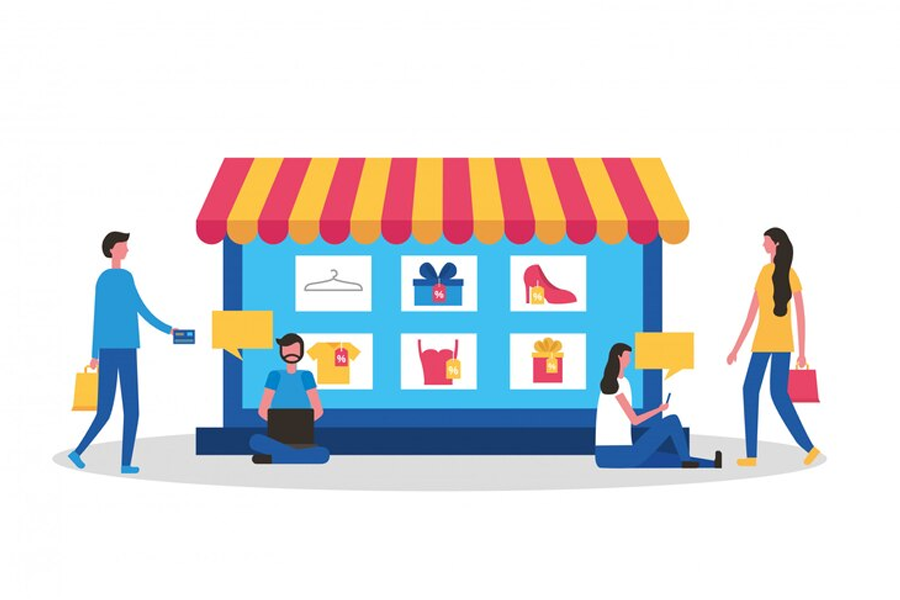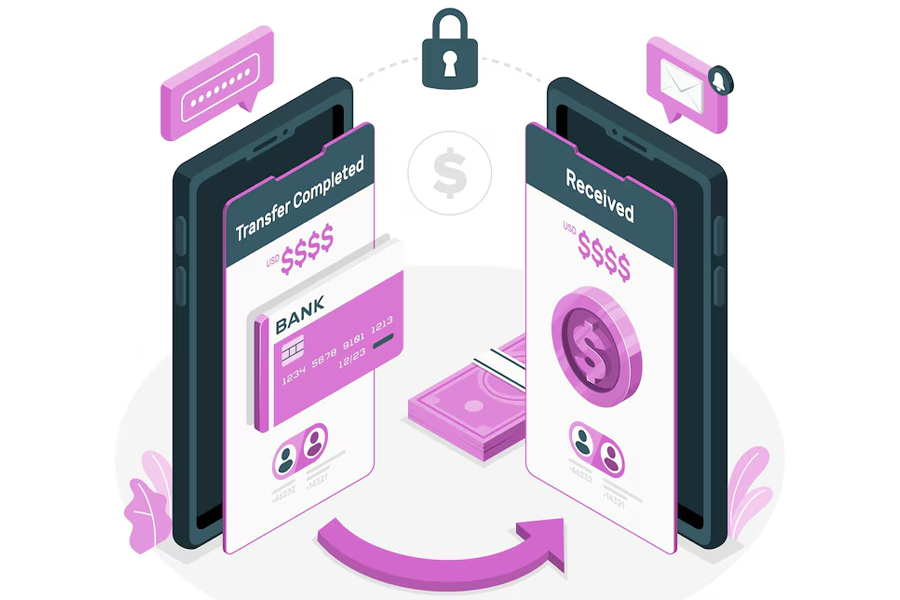What did you think of when you heard ghost commerce? A commercial transaction between ghosts? Or an online store that you can’t see? Well, it’s more of the latter, but not exactly.
The internet has grown so big that those with a strong online presence can leverage their reach to sell without having to own products — that’s what ghost commerce is about. But there is so much more.
Keep reading to learn everything about ghost commerce, from its history to its future projections.

Introduction to Ghost Commerce
Ghost commerce refers to the practice of selling products and services online, without owning a physical storefront. Major ghost commerce businesses include affiliate marketing, dropshipping and influencer marketing.
These models allow an individual to sell to their target audience without having to manage inventory, hence its name. This process involves an e-commerce business sending clients to another ecommerce platform or alerting the manufacturer once there is a new order.
The main Ghost commerce strategy involves leveraging data analytics, content marketing, search engine optimization (SEO), email marketing and social media marketing to make sales. While it is advantageous to adopt this model it has benefits and downsides that you should be aware of.
Advantages of Ghost Commerce
Some benefits of Ghost commerce include:
- Not handling inventory;
- Low entry cost — no rent or utility fees;
- Global online presence;
- It offers flexibility.
Disadvantages of Ghost Commerce
Some of the downsides of ghost commerce work include:
- Reliance on manufacturer or supplier for customer satisfaction;
- Increase in cyber threats, hacking, and malware attacks;
- Difficulty in keeping customers trust;
- Shipping logistics challenges;
- Staying compliant with every rule and regulation.
Overall this business model allows a ghost commerce retailer to focus on growing their customer base and delivering excellent customer service rather than on physical presence. This way they can boost customer loyalty without inventory management.

Historical Context and Evolution
Ghost commerce dates back to before the internet and the rise of the digital realm. People sold without owning physical stores using printed catalogs and direct marketing to build customer trust and repeat purchases. For example, Oriflame encouraged their network marketers to use this method to sell. But since the digital world and e-commerce platforms became popular, the game changed.
Ghost commerce took off around the late 20th and early 21st century. As more people got into internet marketing, they discovered that ghost commerce presents itself in another way. That is, selling with a ghost e-commerce website or via third-party platforms to a global audience without owning a physical site.
It became a big deal when an online business could earn $40,000 monthly from being an affiliate or dropship without managing inventory. It shows that ghost commerce offers a passive income stream and is a great way to earn online.

Key Characteristics and Attributes of Ghost Commerce
What is ghost commerce’s key characteristic? That would be its reliance on the digital landscape to facilitate transactions. Ecommerce solutions like NEXT BASKET make buying and selling online more easy.
Meanwhile, data analytics tools like Google Analytics help make informed decisions and provide customers with a seamless shopping experience.
More key attributes of the ghost commerce industry are:
- Market Research: You need market research to entice customers and build an online presence in this space. Since you are not the manufacturer or supplier you need research to understand customers’ needs and preferences. You should also know what grabs their attention. However, it is much simpler because you just need to study your suppliers and emulate them or find a competitor that is performing way better than them.
- Passive Income Opportunities: Another big attribute of ghost commerce is the promise of passive income, where you earn money without managing inventory. You can become a passive income earner whether it is affiliate marketing, dropshipping, or print-on-demand services.
- Online Presence Building: A strong online presence is important for success in ghost commerce. It could be through a website where you create blog posts to attract customers or social media where you post content regularly and run ads for traffic.
Lastly, you need to ensure customers feel safe and secure when shopping with you by enforcing robust security measures. No one wants to do business or share their account details with a site that feels unsafe or is prone to attacks.
Examples of Ghost Commerce Practices
A popular example of ghost commerce is affiliate marketing where a publisher can earn a commission to promote products and a business can grow its sales simultaneously.
Some businesses (also called merchants) either start an affiliate program or join a network to find affiliates (also called publishers). These publishers have built an audience in the niche so they simply promote the products to their audience for a commission.
Below are more examples.
Print on Demand
Another example that has become popular lately is print-on-demand. It’s a business where you can sell custom designs on items(t-shirts, water bottles) you don’t own.
You need to find a supplier for the items and just contact them once there is a new order. Your marketing strategy may include paid advertising and email marketing.
Dropshipping
Dropshipping involves selling under your brand name without keeping inventory. It’s a process where a third party (supplier) delivers directly to your customers once there is a new order.
This means you don’t see how the products are packaged so you must trust your supplier to deliver quality.
Digital Products
Lately selling digital products, such as e-books, online courses, or software, has become a growing trend but you may not have known it as ghost commerce. Several individuals turn their knowledge into wealth by creating a digital product that can be sold repeatedly.
They don’t have to worry about inventory management or shipping logistics and simply follow the creation once and sell it forever. In driving traffic, marketers have to employ ecommerce content marketing, paid advertising and email marketing.

Implications for Traditional Retailers
With the shift towards ghost commerce, traditional retailers with physical stores have started facing challenges with getting traffic to their stores. They have to think of different ways to market products and gain traffic.
They need to adopt online marketing strategies like setting up online stores, writing blog posts, and offering omnichannel customer experience to reach a wider audience. The following are more impacts of ghost commerce on traditional retailers:
- Turning physical stores into distribution centers. Traditional retailers now use their existing stores as pickup centers for online sales. This is much better for customers who find it cheaper to pick up than pay the shipping logistics fee.
- Like ghost commerce businesses, physical stores also need to invest in data analytics to build strong relationships with customers and understand customer behavior.
- Technology can help automate manual tasks of checking product availability so customers online are aware of stock levels before ordering.
Instead of using catalogs, traditional retailers need to become active online and use digital tools to boost their traffic to their physical stores.

Consumer Trust and Perception
Since you are not the manufacturer of these products, you must find trustworthy suppliers.
If you aim to build strong relationships with your audience as a ghost commerce retailer you need to ensure clear communication and that product quality is high. Avoid exaggerating promises and make your ecommerce user-friendly.
Let us see more ways to secure customers’ trust below:
- Transparency and Reliability: You have to ensure three things — transparency, security risks, and reliability if you want customers to trust you. As an affiliate, you should indicate that when customers purchase through a certain link you will be earning money from it. In the case of dropshipping, taking ownership is key. Your customers have no idea that you don’t own the products so you must take responsibility when they complain.
- Engagement and Communication: Provide multiple options for customers to reach and be available to answer when they call. Several eCommerce stores have multiple contact options but don’t respond when customers reach out. Don’t be like that as it could be an upsetting experience for them.
- Customer Feedback: You should measure your customer effort score (CES) after customer interaction and Net Promoter Score (NPS) frequently. It helps you know if customers enjoy their experience when navigating your website and how willing they are to promote you.
Lastly, as an influencer or ghost commerce retailer, only promote high-quality products to your audience. Just because you aren’t the owner of the product, it doesn’t mean you can promote just anything to them. You should try out the products yourself before advertising them.

Technological Enablers and Innovations
Technology has made a significant impact on commercial activities by making it simple to buy and sell online. It has also brought ghost commerce to a point of low entry — anyone, anywhere can become a ghost commerce retailer with their smartphones and laptops.
- E-commerce Solutions: There are e-commerce platforms like NEXT BASKET that help retailers set up their online stores. These applications provide tools and features to ease the setup.
- Artificial Intelligence (AI): AI tools like ChatGPT and algorithms on ecommerce platforms help businesses to personalize their customers’ shopping experience.
- Payment infrastructure: This is the bridge that enables customers to pay for a transaction. Without it there is no way for you to get paid when customers want to buy so thank you technology.
- Social Commerce: Seeing how businesses have used social media to make sales, these platforms now provide tools to help manage a drunk business. For example, on Instagram, you can add a product tag and link to the shop so that customers can proceed to buy without having to message you for the price.
Although this isn’t popular yet, customers can use voice search to search for what they need via search engines and some other voice-activated devices and ecommerce platforms. This way they dont have to spend much time typing. In conclusion, ghost commerce has simplified thanks to technology.
Future Trends in the Ghost Commerce
As technology evolves with more ecommerce solutions expect that there will be more challenges. For example, as ghost commerce breaks the barrier of cross-country operations there comes a challenge of regulatory compliance and logistics.
The rise of technology like 5G connectivity and the Internet of Things (IoT) makes things in the online space much easier but in the physical space, it gets more complicated.
Let’s see more growing trends and challenges in the ghost commerce space:
- Data Privacy and Security: There will be more rise in data breaches and threats. More malicious actors would want to attack ecommerce sites to steal customer information or hack their payments. Meanwhile, as these happen there will be more security measures to prevent them, although they could be costly.
- Competition and Differentiation: There will be more competition. Although it is easy to start a ghost commerce business, it will be difficult to stand out and stay relevant. The more websites existing on the internet the stiffer the competition.
- Supply Chain Disruptions: You witnessed how the COVID-19 pandemic affected everything Global events. Importing and exporting were restricted in many countries because of the pandemic. We hope it will be the last of its kind but there are natural disasters that can disrupt the supply chain.
Regulation and trade policies are super important when performing commercial activities cross-country and online. Ensure you are always updated on the latest tax policy, customs duties and regulations.
Frequently Asked Questions
How to make money in ghost commerce?
To make money with ghost commerce, you need to pick a model (affiliate marketing, dropshipping or influencing), pick a niche, and build an online presence around your niche.
What is an example of a ghost commerce?
Think of ghostwriting where you could write but you aren’t taking credit for your work. Instead, someone else takes it and you get paid for that. Ghost commerce is similar. You don’t own the products you are selling.
An example of ghost commerce is Buzzfeed which makes money through advertising, sponsored content, or affiliate marketing but isn’t selling its own products.
What can you sell in ghost commerce?
You can sell almost anything with ghost commerce. Anything in the range of products and services that are needed or wanted.